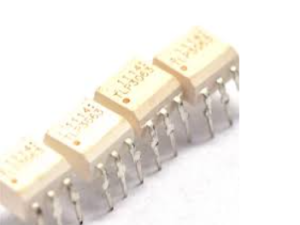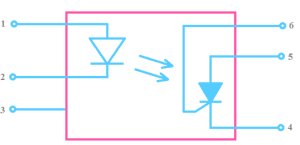Optothyristors: Working, Characteristics, and Applications
Introduction
An optothyristor is a semiconductor device that combines the principles of a thyristor (SCR) with an optical trigger mechanism. Unlike conventional thyristors that require an electrical gate signal, an optothyristor is triggered by light. This property makes it highly useful in high-voltage and electrically isolated switching applications where electrical triggering may be impractical or unsafe.
Optothyristors are widely employed in optoelectronic circuits, high-voltage direct current (HVDC) transmission, and light-controlled power devices. They provide electrical isolation between control and power circuits while ensuring efficient and reliable switching.

Structure of an Optothyristor
An optothyristor typically consists of:
-
Thyristor (SCR) Core – A four-layer (PNPN) semiconductor structure similar to a conventional thyristor.
-
Optical Window or Photodiode Region – A photosensitive area that receives incident light (usually from an LED or laser).
-
Encapsulation – A protective package that allows light to reach the photosensitive gate region while providing electrical insulation.
When photons strike the photosensitive gate area, they generate electron-hole pairs that act like a gate current, triggering the thyristor into conduction.

Working Principle
-
In the off state, the optothyristor blocks current like a conventional thyristor.
-
When a light pulse is directed onto the photosensitive region, it generates charge carriers equivalent to a gate current.
-
This optical triggering switches the device into the on state, allowing current to flow between the anode and cathode.
-
Once turned on, the device remains conducting until the current falls below the holding current, similar to an SCR.
Characteristics of Optothyristors
-
Optical Triggering – No electrical gate current is required; light provides the trigger signal.
-
High Isolation – The control (optical source) and power circuit are electrically isolated.
-
High Power Handling – Can handle large voltages and currents similar to thyristors.
-
Fast Response – Optical triggering can be faster than electrical gate triggering in some cases.
-
Latch-On Behavior – Once triggered, remains on until current drops below holding level.
Types of Optothyristors
-
Light-Triggered Thyristors (LTTs) – Directly triggered by external light sources such as lasers or LEDs.
-
Photothyristors – Devices that have a built-in photosensitive gate for direct optical activation.
Applications of Optothyristors
-
High-Voltage Power Electronics
-
Used in HVDC transmission systems for light-triggered switching of large currents.
-
-
Optical Isolation Circuits
-
Provide safe control of high-voltage equipment without electrical coupling.
-
-
Pulse Power Applications
-
In lasers, flash lamps, and capacitor discharge circuits.
-
-
Industrial Motor Control
-
Used in light-triggered SCR modules for reliable and noise-immune control.
-
-
Switching in Harsh Environments
-
Useful in electrically noisy or hazardous conditions where electrical gate control is unreliable.
-
Advantages
-
Complete galvanic isolation between control and power circuits.
-
High immunity to electrical noise.
-
Simplified triggering circuits (optical instead of electrical).
-
High reliability in high-voltage environments.
Limitations
-
Requires a suitable light source for triggering.
-
More expensive compared to conventional thyristors.
-
Limited availability in low-power versions.
Conclusion
Optothyristors represent an important advancement in power semiconductor devices by integrating optical triggering with thyristor technology. Their ability to provide galvanic isolation, high-voltage switching, and noise immunity makes them indispensable in HVDC systems, pulsed power applications, and industrial automation. As the demand for efficient and safe power control increases, optothyristors continue to play a key role in modern power electronics.